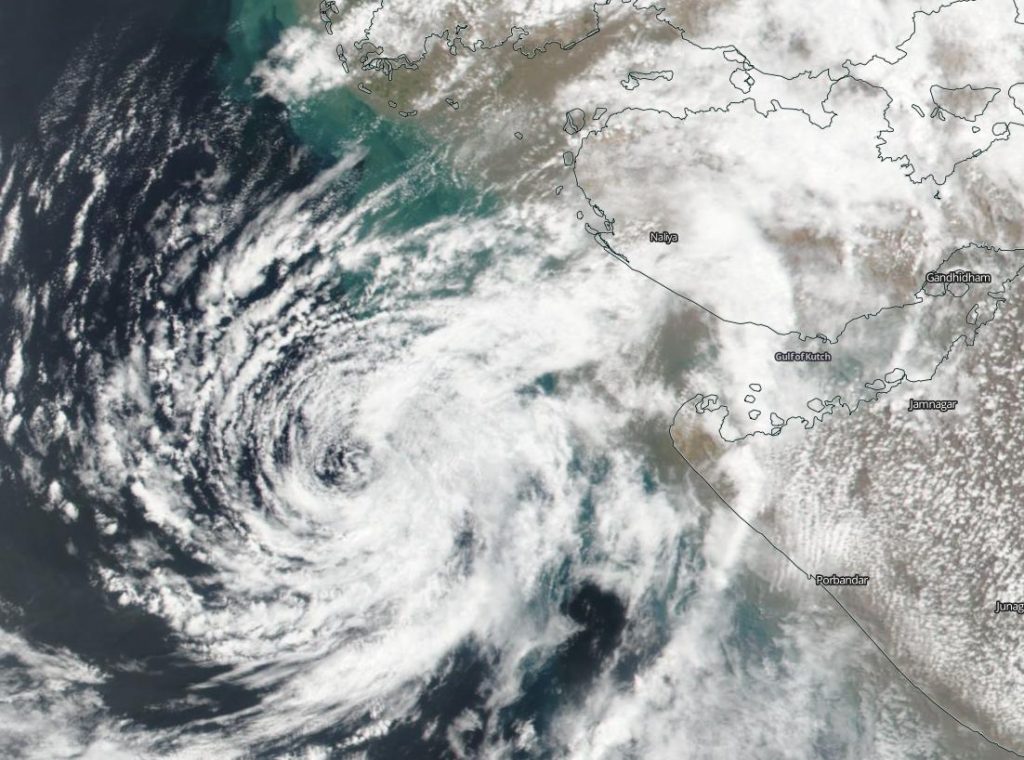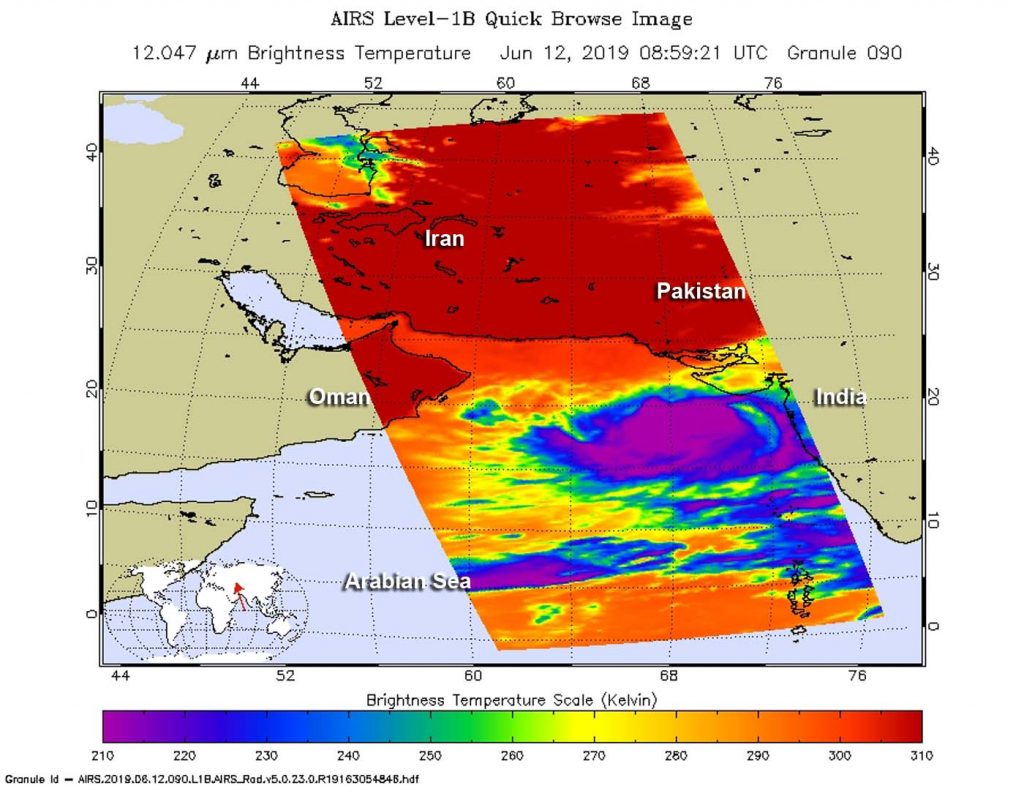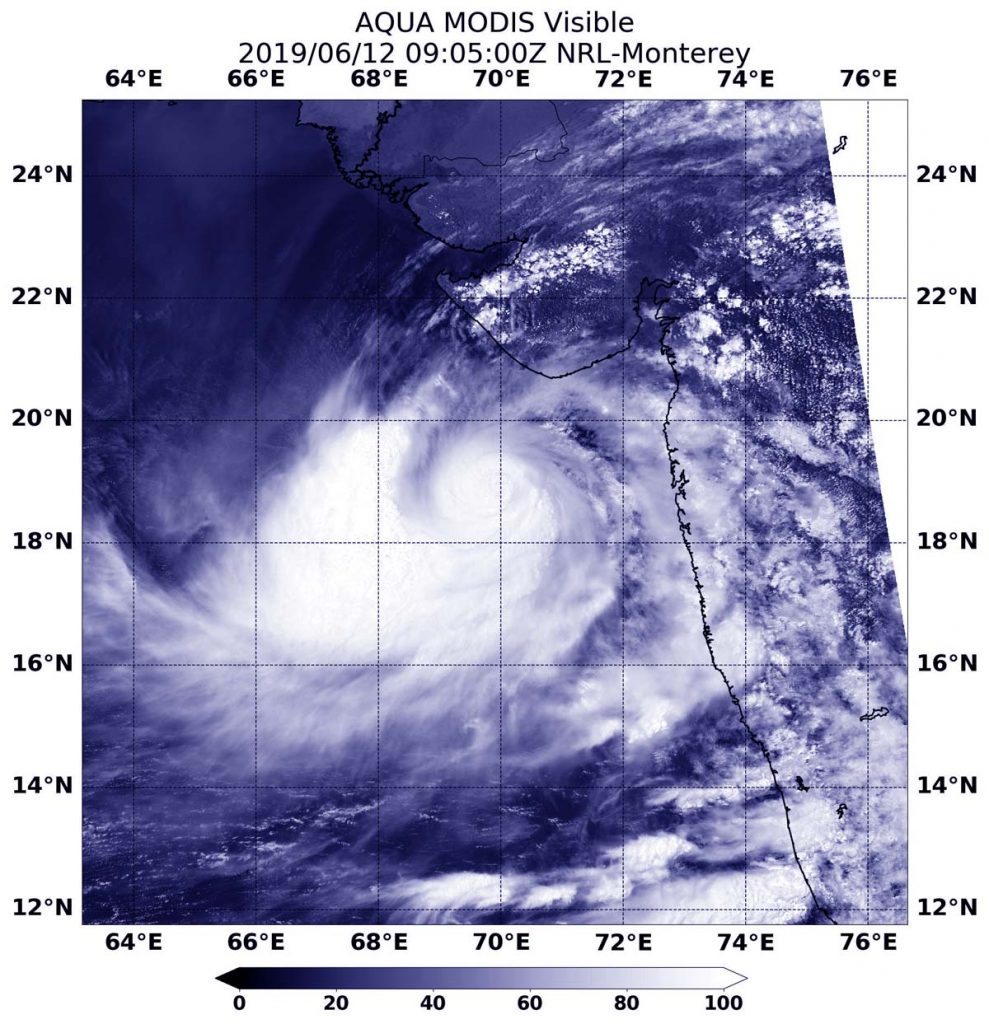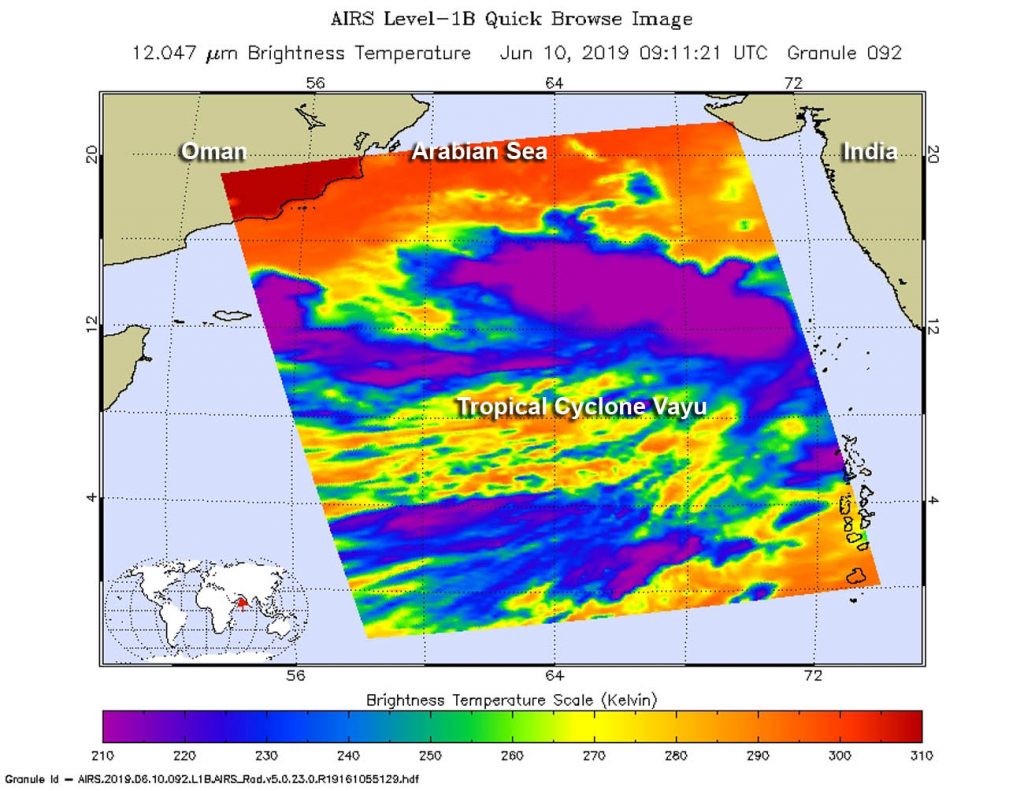June 17 Update – NASA-NOAA Satellite Finds Dry Air Affecting Tropical Cyclone Vayu
Tropical Cyclone Vayu was fading as it neared the coast of southwestern Pakistan and northwestern India. Dry air and wind shear were preventing development the development of thunderstorms, making the clouds on the storm’s western side appear wispy in an image from NASA-NOAA’s Suomi NPP satellite.

The Visible Infrared Imaging Radiometer Suite (VIIRS) instrument aboard Suomi NPP provided a visible image of the storm on June 17, 2019. The VIIRS image showed that dry air that moved into the storm on the western side had prevented further development of the thunderstorms that make up a tropical cyclone. Clouds on that side of Vayu appeared wispy and were precipitation free. Thicker clouds were visible on Vayu’s eastern side where some had already spread over the coast of northwestern Indian near Naliya. Vayu is forecast to make landfall near Naliya later in the day.
On June 17 at 0300 UTC (June 16 at 11 p.m. EDT), the Joint Typhoon Warning Center issued the final warning on Vayu. At that time, Tropical Cyclone Vayu was located near 21.8 degrees north latitude and 66.8 degrees east longitude, approximately 180 nautical miles south of Karachi, Pakistan. Vayu was moving to the northeast and had maximum sustained winds near 35 knots (40 mph/65 kph) making it a minimal tropical storm.
In addition to dry air sapping the tropical cyclone’s ability to create more thunderstorms, wind shear is pushing the remaining storms to the east of the center.
In general, wind shear is a measure of how the speed and direction of winds change with altitude. Tropical cyclones are like rotating cylinders of winds. Each level needs to be stacked on top each other vertically in order for the storm to maintain strength or intensify. Wind shear occurs when winds at different levels of the atmosphere push against the rotating cylinder of winds, weakening the rotation by pushing it apart at different levels.
Vayu is forecast to dissipate later in the day on June 17.






